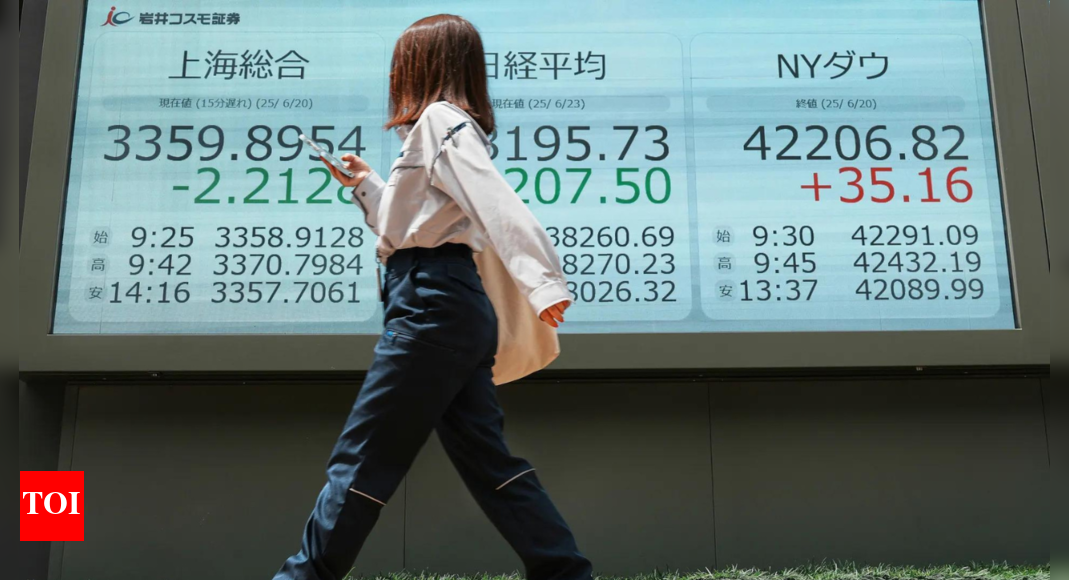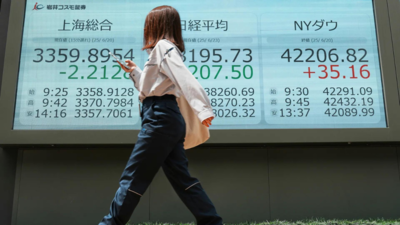Asian equities surged to multi-year highs on Friday, mirroring Wall Street’s optimism, as easing geopolitical concerns and expectations of interest rate cuts lifted investor sentiment across the region. Meanwhile, oil prices posted modest gains but remained on track for a significant weekly decline amid easing Middle East supply risks and growing optimism over US-Iran diplomacy.According to news agency Reuters, MSCI’s broadest index of Asia-Pacific shares outside Japan touched its highest level since November 2021 and was last up 0.2%, set to end the week nearly 3% higher. Japan’s Nikkei 225 jumped 1.5%, crossing the 40,000 mark for the first time in five months, supported by improved sentiment and robust earnings.The rally was buoyed by several positive developments, including a breakthrough between Washington and Beijing on rare earth shipments and news that the US may scrap a controversial tax proposal, a move that had earlier worried foreign investors. Khoon Goh, head of Asia research at ANZ, was quoted by Reuters as saying that the reversal “allays one of the concerns from foreign investors.”European markets also reflected the upbeat tone, with futures on the EUROSTOXX 50 and Germany’s DAX up 0.6%, while FTSE futures climbed 0.16%. The optimism comes amid growing speculation that the US Federal Reserve will begin cutting interest rates soon.As per Bloomberg, a sharp drop in the US dollar has helped lift Asian currencies and fuel demand for regional assets. The Bloomberg Dollar Index is set for its sixth consecutive monthly decline, its worst losing streak since 2017. With Trump reportedly considering a replacement for Fed Chair Jerome Powell by October, concerns about the Fed’s independence have further weakened the greenback.Investor appetite in Asia has also been driven by blockbuster fundraising activity, with IPO volumes across Hong Kong and Tokyo rising sharply. Regional companies have raised over $90 billion through share sales this year, a 25% increase from the same period in 2024.In commodities, oil prices rose slightly on Friday but remained poised for their steepest weekly decline in over a year. Brent crude gained 0.41% to $68.01 a barrel, while West Texas Intermediate rose 0.46% to $65.53, Reuters reported. Despite the modest rise, both benchmarks were down more than 10% this week, reversing gains from the initial surge following the Israel-Iran conflict.According to the US Energy Information Administration, crude inventories dropped by 5.8 million barrels in the week to June 20, far exceeding expectations, as summer driving demand increased. Still, a ceasefire between Israel and Iran has eased fears of major disruptions, limiting further gains.As per Bloomberg, markets are now shifting their attention to upcoming trade decisions in Washington and a crucial OPEC+ meeting on July 6, where production policy for August will be determined.Reuters quoted Phil Flynn of the Price Futures Group as saying, “The market is starting to digest the fact that crude oil inventories are very tight all of a sudden,” adding that a weaker dollar is also supporting prices.Despite lingering uncertainties around US trade tariffs and Iran’s future oil exports, the market’s focus has returned to fundamentals. Citi analysts noted that Trump’s swift ceasefire push “suggests he remains sensitive to high oil prices,” potentially capping geopolitical risk premiums.With investor optimism returning and central banks signalling support, Asia’s equity and credit markets appear well-positioned, though analysts warn the road ahead may still hold “a few more twists,” especially with upcoming trade deadlines.




